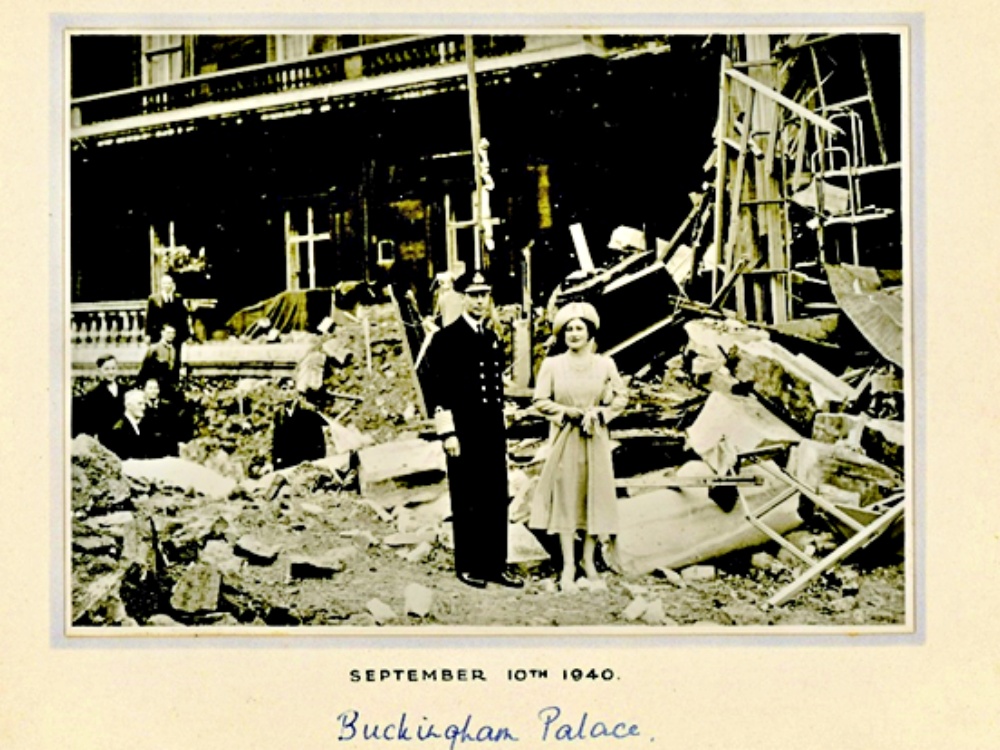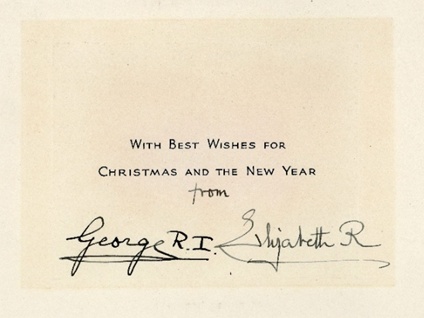
Submitted by: Andrew Oakden
Shilo Stag News
In Canada, sending military Christmas cards is a tradition that pre-dates Confederation. It was a small gesture, a token of goodwill, which meant a lot. When the card contained a photo, it became a keepsake, commonly kept for posterity. The RCA Museum has an extensive collection of Christmas cards. The cards were handmade or printed, with most produced during WW1 or WW2.
The RCA Museum has a unique Christmas card addressed to the Commander of the Canadian Overseas Force at Headley Court in Surrey, England, during the Second World War. The card contains a photo of King George VI and Queen Elizabeth in front of bomb damage to Buckingham Palace, dated September 1940. At the time, Lieutenant-General A. G. L. McNaughton commanded the Canadian Overseas Force, part of the Anglo-Canadian VII Corps in Great Britain.
During the Battle of Britain (July to October 1940), the German Luftwaffe ramped up attacks on London, damaging much of the city, and even King George VI became a target. On Friday, September 13, 1940, the Luftwaffe bombed Buckingham Palace, the residence of the British monarch. Fortunately, King George VI and Queen Elizabeth escaped unharmed. The attacks, part of the larger Blitz on London, caused damage to the palace, including the destruction of glass windows and many rooms. However, it did not significantly disrupt the functions of the royal family.
In the summer of 1940, Canada had two Canadian infantry divisions and other troops in Great Britain, part of VII Corps. In May 1940, Canada announced the formation of the 3rd Division, and by December 1940, Canada created its own Canadian Corps led by Lieutenant-General McNaughton. During this time, Canadian troops bolstered Britain’s defence against potential enemy attacks. The Royal Canadian Artillery, part of the Canadian contingent, defended against air raids, provided anti-aircraft defence and supported ground forces against a possible land invasion.
Lieutenant-General McNaughton stationed artillery units in London during the aerial blitz. Gunners from the 2nd Field Regiment and 3rd Field Regiment helped local auxiliary fire departments extinguish fires and rescue civilians after incendiary bombings. Additionally, at the end of 1940, the Canadian Corps formed light anti-aircraft batteries with 40mm Bofors anti-aircraft guns along the southern coast of Britain to defend against potential aerial attacks and prepare for future field operations. Canadian military efforts were part of the larger Allied collaborative defence strategy to safeguard against German aggression.
The Christmas card represents a fascinating snapshot of the early period of WW2. Any letter addressed to Lieutenant-General McNaughton is notable, and this Christmas greeting from King George VI is particularly unique. General McNaughton likely exhibited the card at headquarters for all staff to see and read. King George VI and Queen Elizabeth signed the card. It says, “With Best Wishes for Christmas and the New Year.” The image of the bombed palace served as a reminder of what soldiers were fighting for and became a symbol of resilience and solidarity for
the Commonwealth during WW2.
The Christmas card with King George VI and Queen Elizabeth in front of the bombed remains of Buckingham Palace conveyed a message of warmth and hope during a time of great uncertainty and danger. It was a small yet powerful gesture that helped bridge the gap between the armies, providing comfort and emotional support during the holiday season.
Military Christmas cards like this one served as a symbolic lifeline, reflecting the spirit of resilience and patriotism. In a landscape marred by uncertainty, these tokens of goodwill represented a belief in better days to come.


